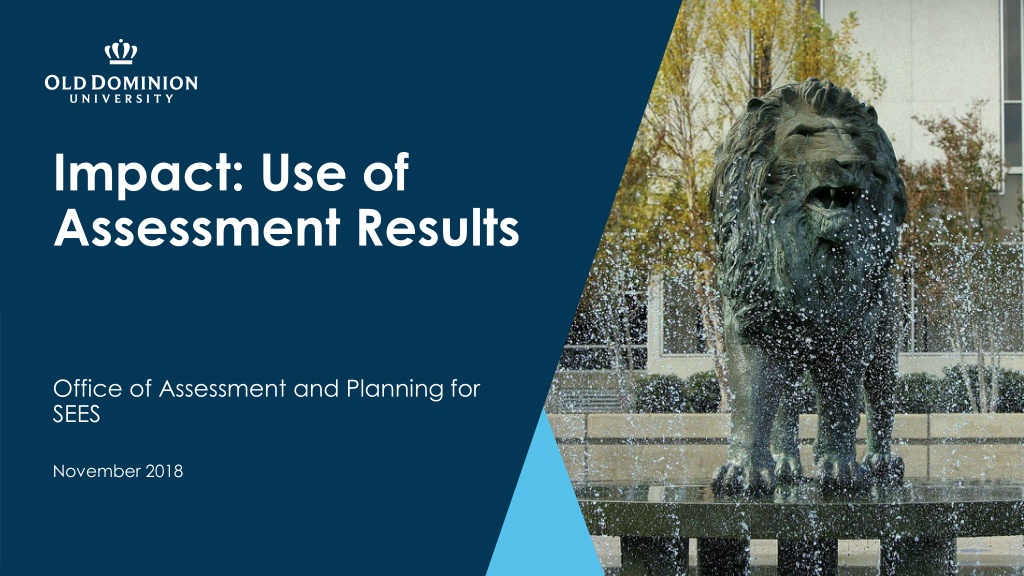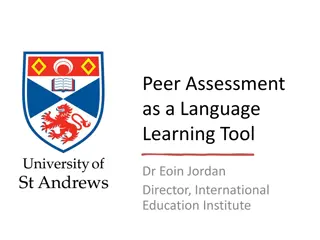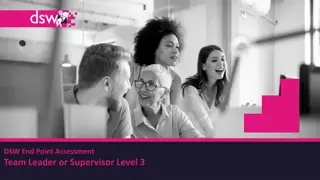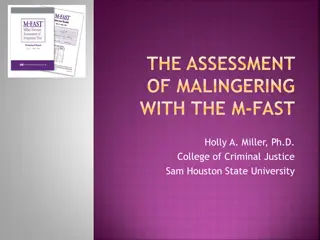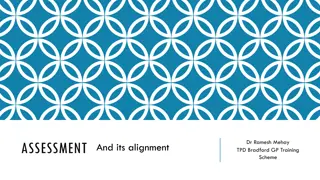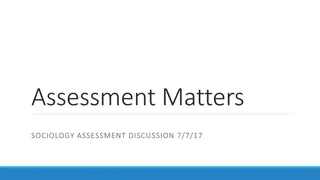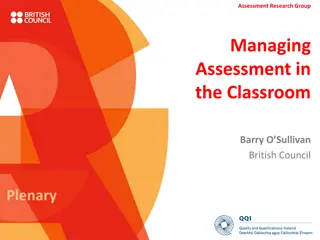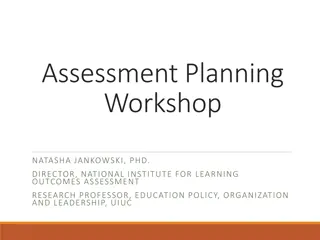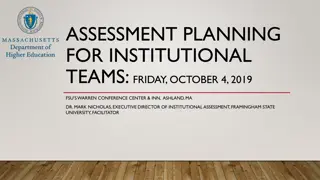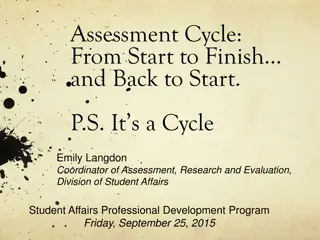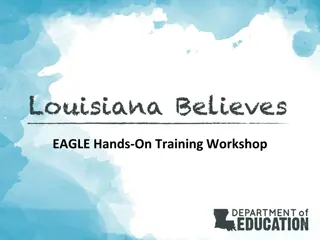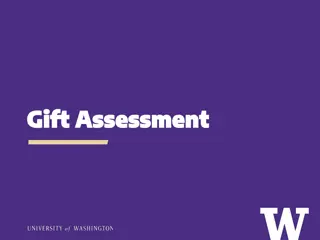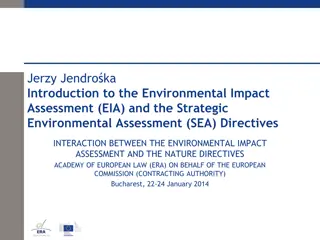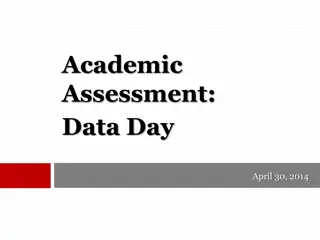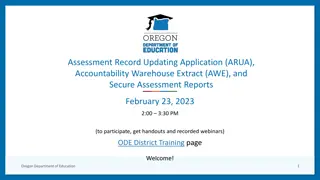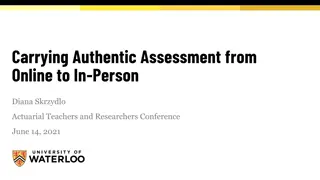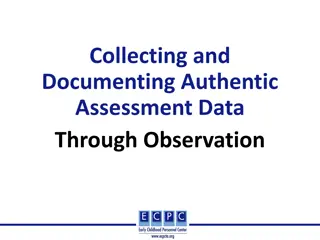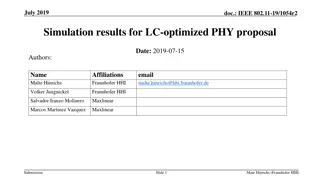Impact: Use of Assessment Results
This report highlights the impact of assessment results on the planning process within the Office of Assessment and Planning for SEES. It discusses the significance of utilizing assessment data to inform decision-making and program improvement. The document underscores the crucial role that assessment plays in shaping strategic directions and enhancing outcomes in the SEES domain.
Download Presentation

Please find below an Image/Link to download the presentation.
The content on the website is provided AS IS for your information and personal use only. It may not be sold, licensed, or shared on other websites without obtaining consent from the author.If you encounter any issues during the download, it is possible that the publisher has removed the file from their server.
You are allowed to download the files provided on this website for personal or commercial use, subject to the condition that they are used lawfully. All files are the property of their respective owners.
The content on the website is provided AS IS for your information and personal use only. It may not be sold, licensed, or shared on other websites without obtaining consent from the author.
E N D
Presentation Transcript
Impact: Use of Assessment Results Office of Assessment and Planning for SEES November 2018
Using Your Results The purpose of engaging in assessment is to use your results to improve your program. Results give you the ability to make informed decisions about changes that could be made to improve student learning. You have to make sure your results are used effectively and appropriately; your results should not dictate your decisions, but inform them. Use of results means intentionally changing policy or practice based on assessment information. 2
Thoughtfully Planning for Change Before making any changes, know exactly what impact you are looking for so you can track your program s progress. In some instances changes will be minor and easy to implement, but in other instances significant change could be necessary and take years to implement successfully. Set clear goals so you can readily identify strengths and areas that may need improvement 3
Common Mistakes Sometimes when using assessment results to make changes, administrators tend to make lofty assumptions about how certain changes will affect the program. This can influence them to set unrealistic goals. Ask yourself a few questions: 1. Are my goals appropriate? 2. Do my goals need to be simplified? 3. Do I have too many goals? There should not be an expectation for any change(s) you make to be the final iteration of your program. Students needs will change over time and there is always room for improvement. 4
Be Realistic Do what you can, with what you have, where you are Theodore Roosevelt Always consider your limitations when assessing your program. Your results may have given you valuable information on how to improve your program, but lack of resources can make some changes extremely difficult or impossible. Use the resources you do have to affect change. If what you are doing is working, it could drum up support for larger-scale changes. Also keep in mind that it is normal for new questions to form in this stage of the process, thus starting you back at the beginning of the assessment cycle. 5
The Simplest Use of Results Model Assess, Intervene, Re-Assess To show use of results, you must have already completed these three steps. Once you have results, you must: 1. 2. Reflect on them Decide what purposeful change you want to enact to improve student learning associated with them Intervene by making change in an attempt to improve student learning Re-assess to see if the change actually resulted in improvement. 3. 4. 6
References California Polytechnic State University. (2018). Using assessment results for program improvement. Retrieved from https://academicprograms.calpoly.edu/using-assessment-results-program-improvement Fulcher, K., Good, M., Coleman, C., Smith, K., (2010). A simple model for learning improvement: Weigh pig, feed pig, weigh pig. Retrieved from http://www.learningoutcomesassessment.org/documents/Occasional_Paper_23.pdf James Madison University. (2018). Reporting and use of results. Retrieved from https://www.jmu.edu/assessment/sass/step 7 use of results.shtml Jankowski, N. (2013) Showing an impact: Using assessment results to improve student learning. Retrieved from http://www.learningoutcomesassessment.org/Presentations/FL%20State%20Assessment%20Mtg.pdf Missouri State University. (2018). The assessment process. Retrieved from https://www.missouristate.edu/assessment/the- assessment-process.html 7
